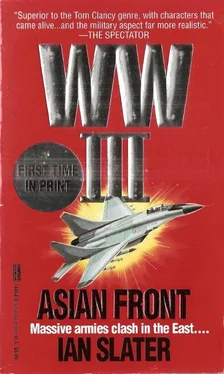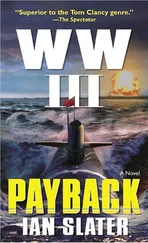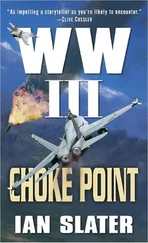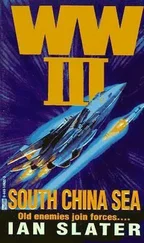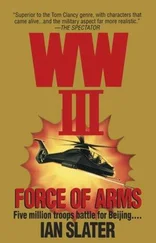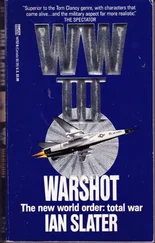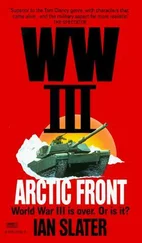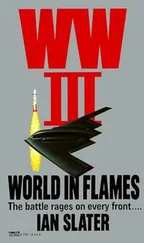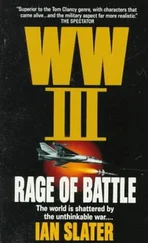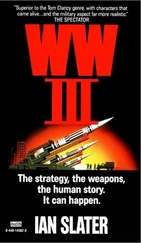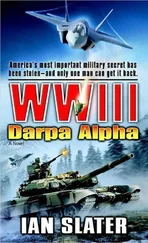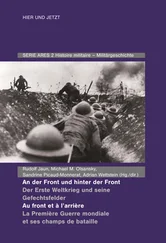“Yes, yes, you’re quite right, comrade,” the president agreed at once, full of gratitude, more than he could explain, for the comfort and attendance of his friends after the fright he’d got in the temple. He asked the aide to look at the paper again, at the American general’s request for free passage of American troops across eastern Mongolia should it become necessary. The American general had clearly meant the message to be seen only by the president. But the guide Jenghiz had added something else. At the end of the prayer there was another sentence: “Save my family” followed by seven numbers.
“What are these?” the president asked his aide.
“Coordinates, I believe, Mr. President. Map references.”
The president had a moment of inspiration. “Should we give these to Novosibirsk? Tell them it was an assassination party against me and this is the enemy’s escape plan?”
The aides nodded. They liked the idea. There was a danger of course that if captured, the SAS/D men would be tortured and confess Freeman’s request, but the chief aide said that this was highly unlikely now that the SAS/D and Spets group were on the lookout for one another. There would be no prisoners if they met.
“Yes,” the president said, brightening with me prospect. “Yes. Give the Siberians the coordinates. Let them think the SAS was on an assassination mission. Tell them the bullet was meant for me instead. Whether they believe it or not, they’ll settle for an SAS/D troop. Yesov can do what he likes with them.”
The aide tore off the coordinates and gave them to a messenger. “Have these radioed to Novosibirsk. Immediate.”
* * *
Novosibirsk bounced the encoded signal off satellite, and within minutes the Spets squad was enplaning a Kamov Helix-B chopper armed with a four-barrel rotary 7.62mm gun behind a starboard articulated door and an array of antitank Spiral radio-guided missiles and two 80mm rocket packs on four pylon hard points. The Helix would take them to Nalayh, the extraction point for the SAS/D troop no more than five miles north of Nalayh township’s center.
But even with the Helix-B the praporshnik and his six-man team knew they’d have to hurry, for the SAS/D was as well trained as they were. They knew that for a member of the SAS to be “badged” with the highly coveted Special Air Services beige beret with its cloth insignia of a blue-winged white dagger on a black shield, the SAS recruit had to go through a grueling regimen with everything from crosscountry marches with full packs to the HALO — high altitude, low opening — drop with oxygen mask and full gear.
The SAS/D commando requirement for an “in-house” assault was that a man armed with a submachine gun must be able to burst into an embassy or enemy HQ and mortally wound three opponents using only one magazine from as far away as thirty feet. As with the Spets, no more than three shots were allowed on target, and in SAS close-quarter battle every SAS man, no matter what his previous incarnation— artillery, engineering, catering corps, or infantry — had to be able to achieve “minimum kill,” taking out four men from a distance of sixty feet with no more than thirteen rounds of 9mm from his Browning pistol. If he had to go to a second clip he was disqualified.
Only after they’d finished their course in the Black Mountains on the Welsh-English border where the SAS “Sabre” combat groups were trained — eighty men in a squadron — would they be allowed to graduate with the coveted insignia, “Who Dares Wins.” The Spets leader had studied the SAS minutely. He knew also of their tremendous esprit de corps, how hard they trained to “beat the clock,” for when SAS men were killed in action the regimental tradition called for their names to be carved on the clock at Hereford HQ.
Since 1950, over 270 had died in action — not a lot compared to the casualty list of regular army line units, but for a small, elite unit like the SAS it was heavy enough. And among those had been twenty-one American dead from U.S. Special Forces who had served with and helped train the SAS in “field medicine” and LIT — language immersion techniques.
“Hurry!” the praporshnik told his six-man squad.
* * *
Aboard a Boeing E-3A Sentry AWAC — airborne warning and control aircraft — the thirty-foot-diameter rotodome picked up the green blip of the Helix-B chopper rising from the vicinity of Ulan Bator, and given that this was during the time slot allocated for the SAS/D mission into Ulan Bator, the AWAC crew automatically notified Freeman’s HQ of its presence. But there was nothing more that Freeman, who’d retired for the night, or Colonel Norton, who’d received the “in-trouble” burst transmission from the SAS/D group, could do at this juncture. The drill was straightforward. If something had gone wrong, the radio burst transmission from the SAS/D troop would indicate this and they would have to rendezvous at the backup position near Nalayh. An MC-13 °Combat Talon aircraft with fighter cover would be dispatched for a quick STAR extraction.
Such an extraction, Norton knew, as did everyone else who’d tried it, was highly dangerous. But first the SAS/D team had to reach the emergency extraction point. Norton, wish though he might, could do nothing. They were on their own.
Unfortunately this wasn’t Norton’s only worry. Even if the SAS/D team had got the message through to the Mongolian president, any American drive south in the coming days would be in high jeopardy so long as the Chinese could use their IMF missiles, which Israeli intelligence had confirmed were in the Turpan depression in western Sinkiang. Meanwhile all Norton could do was tell Second Army’s logistics officers in the U.S.-held Siberian zone to get ready with as much matériel as was needed at railheads south of Ulan Ude and Chita, which would be the main supply hubs for any southward drive of Freeman’s.
Meanwhile SATRECON showed the Chinese still massing troops on the border between their Inner Mongolia and Mongolia proper as if rushing to form a reverse-seven defense. Troops on the top of the reverse seven — in its northern sector — protected the Manchurian-Siberian border along the Black Dragon, or Amur, those units constituting the vertical section of the reverse seven forming the PLA’s left flank. Norton could only hope that the new whiz kid, General Jorgenson, a brilliant forty-five-year-old flown out from the States to take over as chief logistics officer after the previous one had died in the action around Poyarkovo, knew what he was doing. Jorgenson had been selected because of his experience in the Iraqi War. Even so, Norton knew that, given the distances and varied terrain here, it would take more than logistical brilliance to sustain an American counterattack either to the south or against the Chinese northern or left flank.
* * *
While General Cheng was taking care not to move his troops before the chaotic small-arms mess was sorted out at the front, he had used the time to bring up ten companies of self-propelled 122mm howitzers mounted on Soviet-style M-1967 amphibious fighting vehicles, twenty companies of Zil-151 launcher vehicles carrying sixteen 132mm rockets apiece with side-mounted reloads, and three hundred sixteen-tube Zil-157 truck launchers for 140mm rockets, along with three hundred of a PLA favorite — the twelve-tube 107mm rocket launcher. At four hundred pounds, the 107mm unit was heavy enough but sufficiently light that it could be manhandled — that is, pulled by a squad of Chinese infantry or, if they were lucky, by a BM-13 truck or mules as they passed through the Manchurian mountains under cover of strato-nimbus cloud that stretched like a thick, gray ceiling all the way to the Sea of Japan.
Читать дальше
